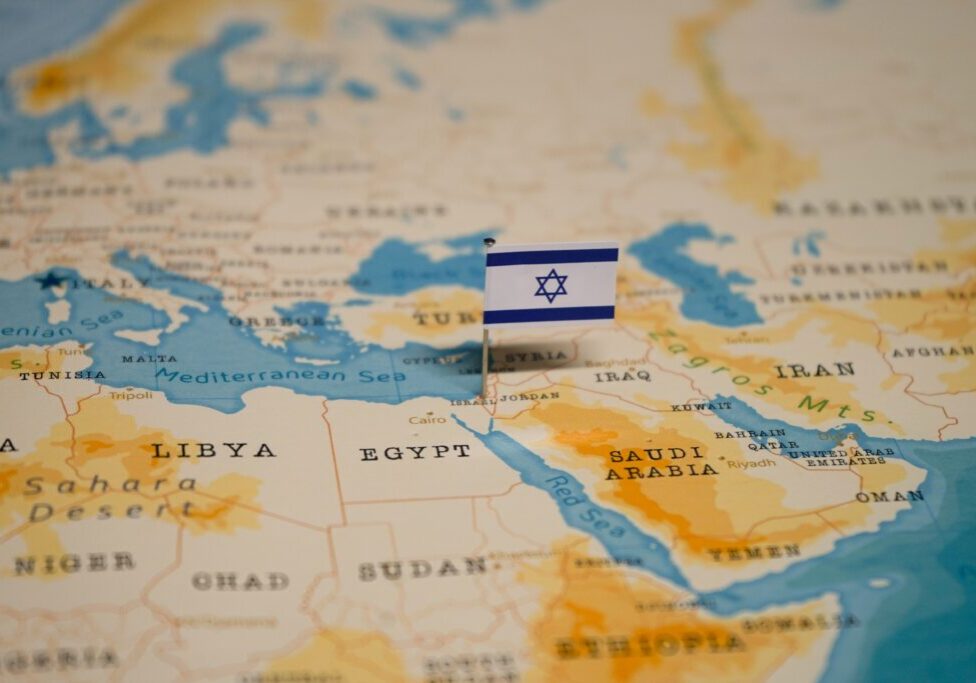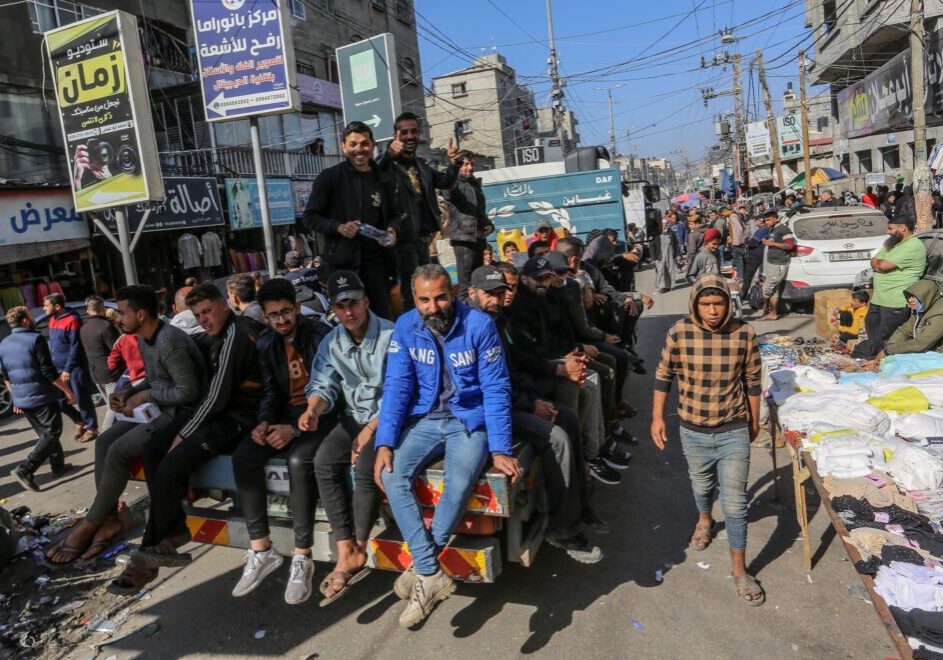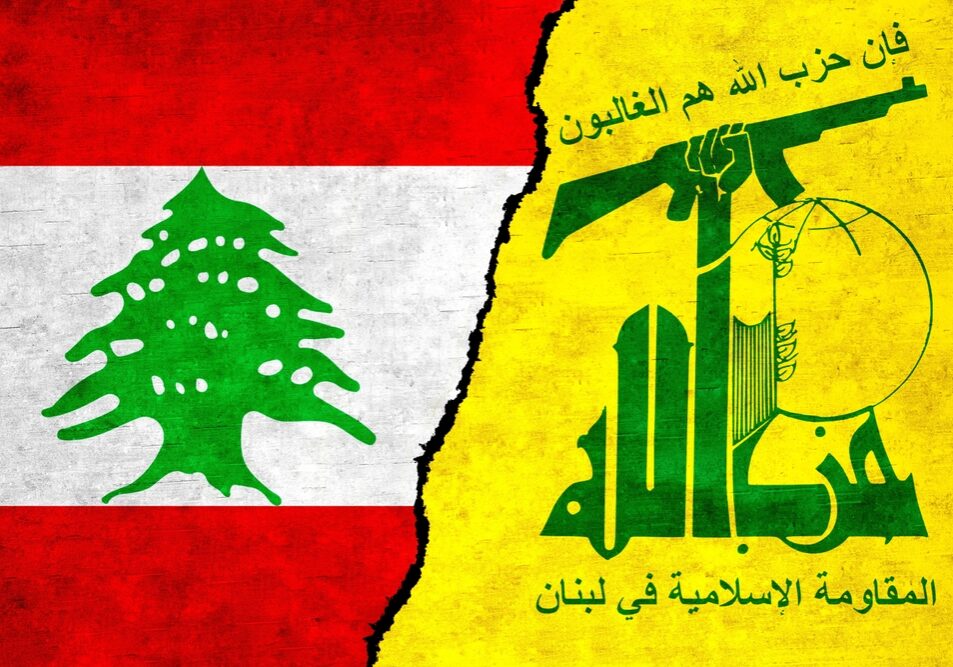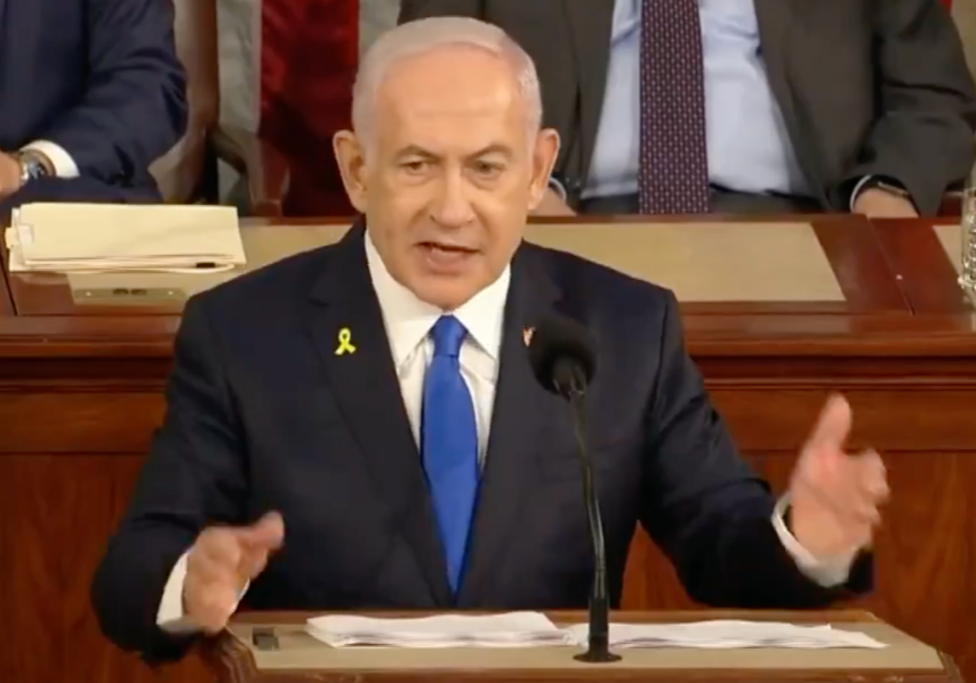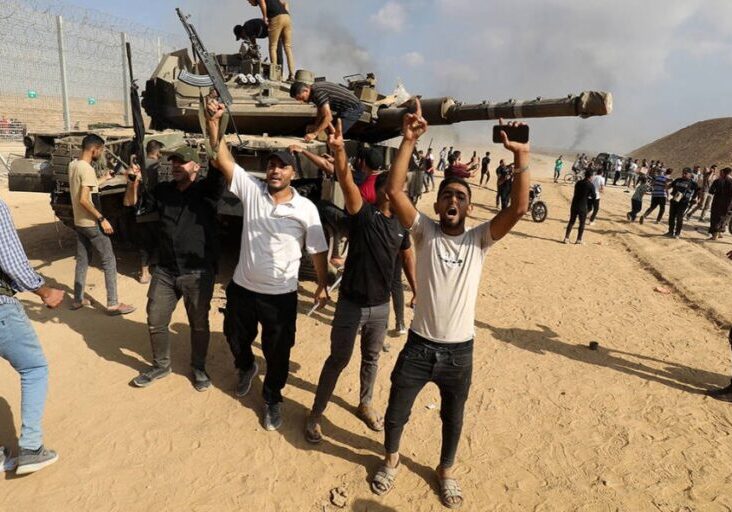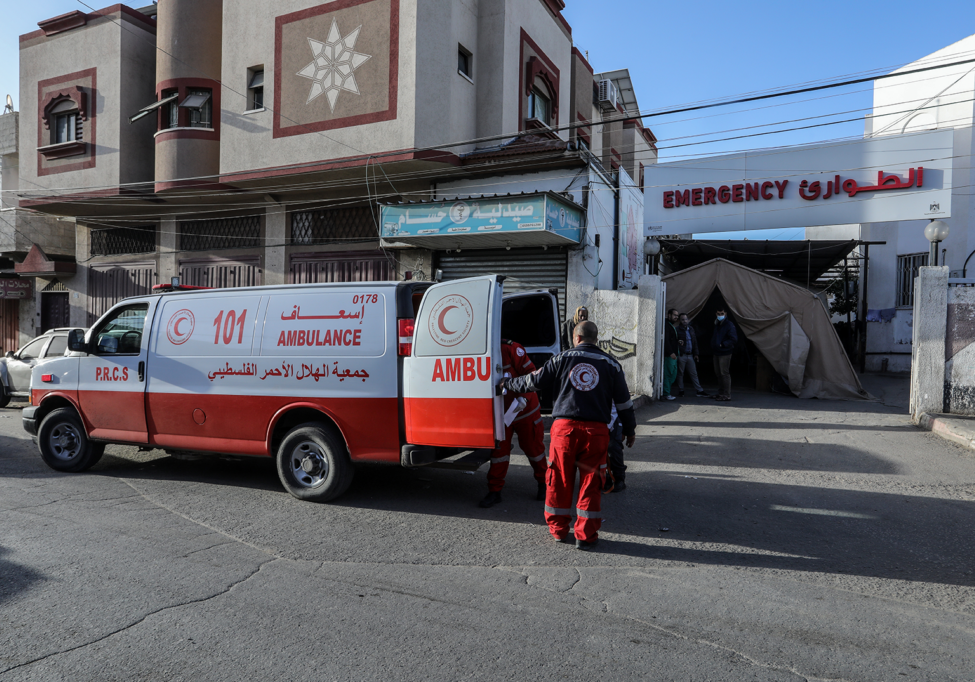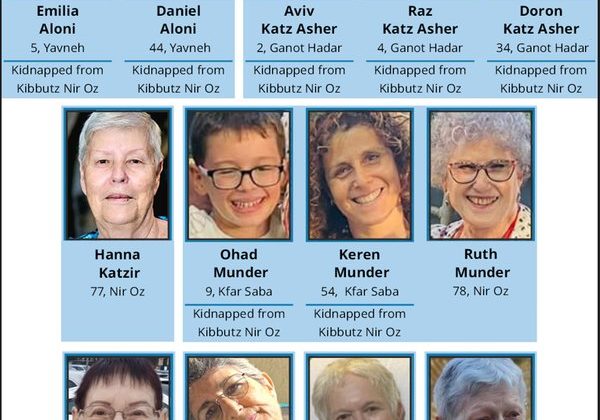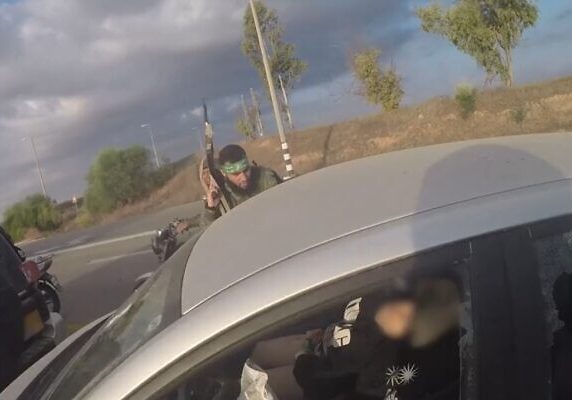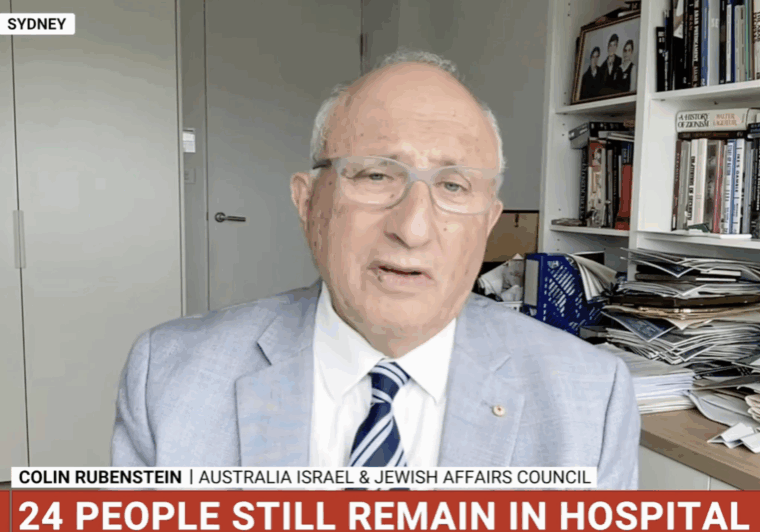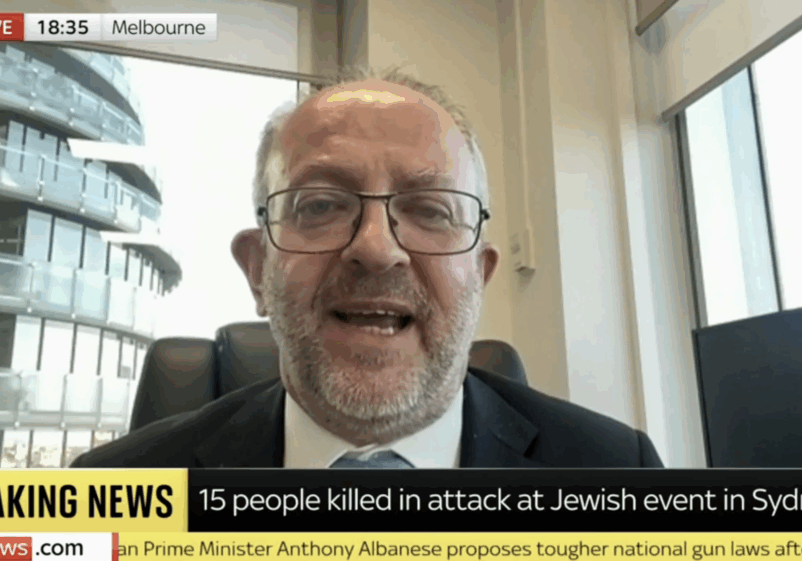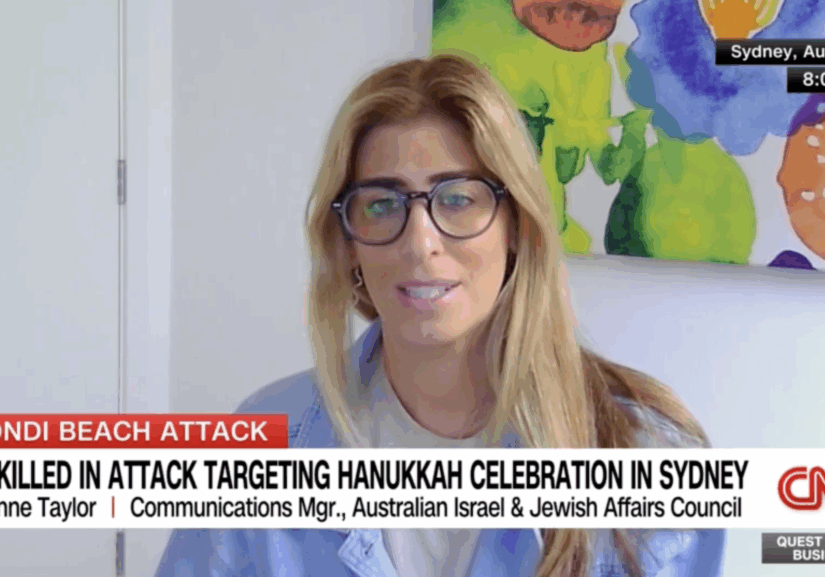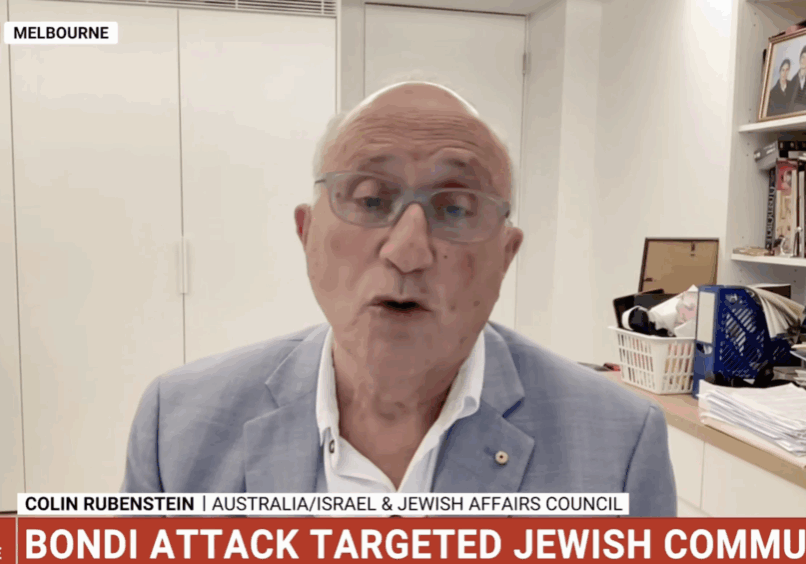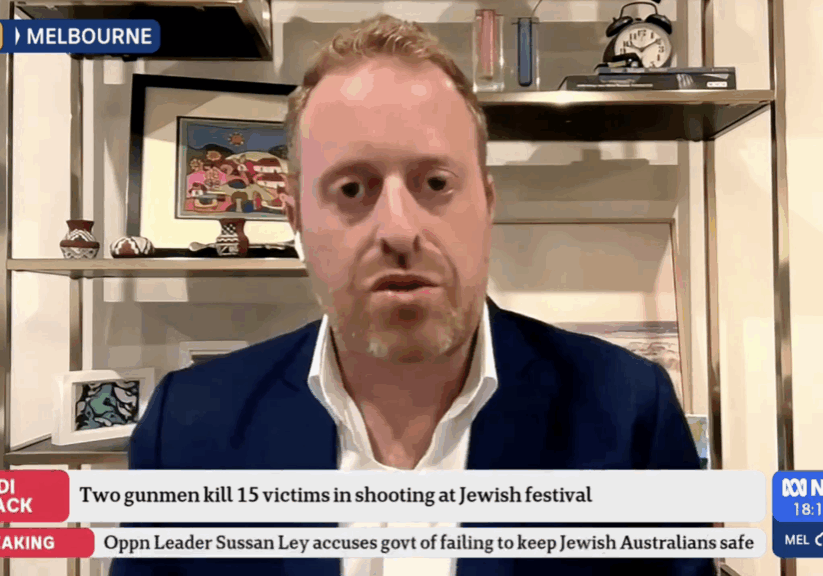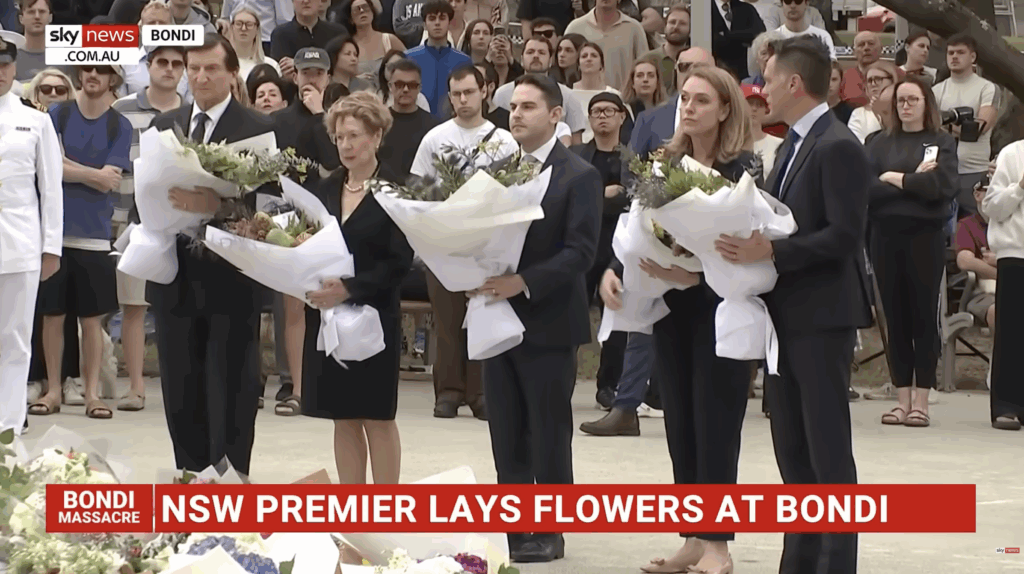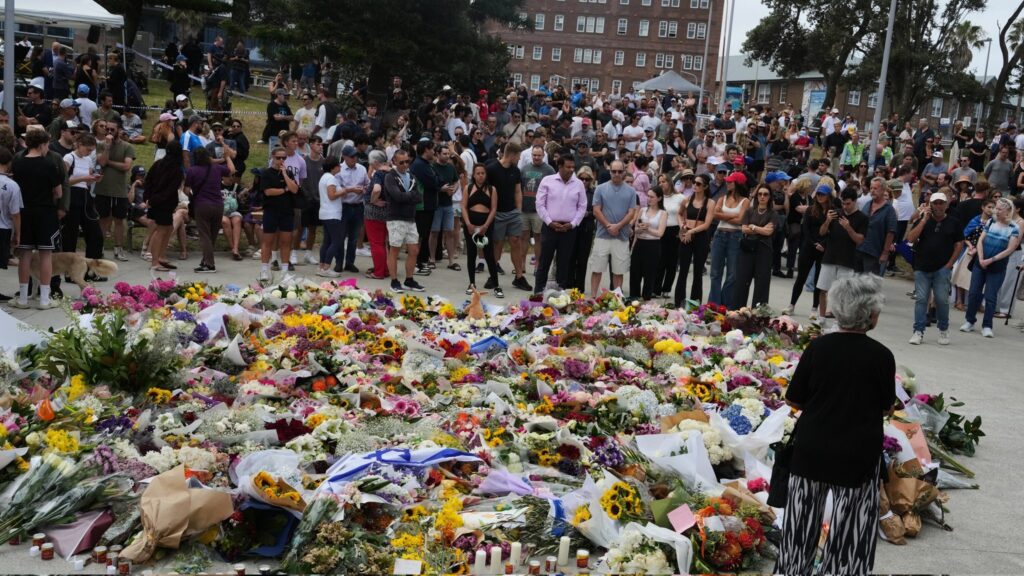FRESH AIR
Weekend Hebrew media update: Gaza, Iran and Israel
June 27, 2025 | Ahron Shapiro

Following the apparent conclusion of the 12-day Israel-Iran war, AIJAC once again brings you rare and exclusive interviews, fresh analysis and commentary from Hebrew Israeli media as some weekend reading.
- In his weekly column in Yedioth Ahronoth, Amit Segal gives his insider perspective on the war against Iran, Gaza and domestic Israeli politics
- In the aftermath of the bombing of Iran’s nuclear sites, journalist Ariel Bulshtein from Israel Hayom (Hebrew) interviews Dmitry Kovchegin, a Russian-born expert on nuclear security who discusses the war’s effects on Iran’s nuclear sites, Russia’s role in Iran’s nuclear program and his own concerns about the whereabouts of some of Iran’s missing enriched uranium.
- At Channel 12’s web-based news site N12, Sapir Lipkin reports on how Hamas has resumed stealing humanitarian aid, and the “Arrow” force it has created to kill those who attempt to defy them on this matter.
Days of the Envoy
When did Ron Dermer begin to deal with the nuclear threat and how did he influence the decision to launch the attack planes • How accurate was Eyal Zamir in 2022 in his research on the war threats he would lead three years later • What are Hamas’s three worries after the ceasefire with Iran • And will the sense of unity that took hold during Operation Rising Lion carry into the next election?
Amit Segal
Yedioth Ahronoth
June 27, 2025
Ron Dermer, the quarterly visitor
A very rare guest arrived at the Knesset on Wednesday evening, the night before the strike on Iran. Minister Ron Dermer hadn’t visited the Knesset in half a year, but he made the very short journey from his office to the building because he belatedly realised that everything he had worked on was about to unravel because of a few ultra-Orthodox rebbes. Had the Knesset approved its own dissolution, it’s doubtful the strike would have occurred the next day. It would have appeared political, and Trump would have viewed Netanyahu as a lame duck. “I said to whoever I said what I could,” Dermer summed up his persuasion in the Knesset in six words. It helped.
A day later, dozens of metres underground somewhere in the Jerusalem hills, the minister responsible for American affairs was granted the floor, moments before the cabinet vote.
“In every generation, they rise up against us to destroy us,” he said. “The Iranians are the ones trying to destroy us in this generation. I’ve been working for 25 years to prevent this.”
He was referring to what began in the year 2000, when, at their first meeting, then-citizen-concerned Netanyahu and the young citizen Dermer spoke about the Iranian threat. The current round began a few days after the 2024 elections, in Mar-a-Lago, when Dermer flew to meet the newly elected president.
If you strike Iran, he tried to persuade Trump, what happened to Biden after the withdrawal from Afghanistan will happen to you — only in reverse. The fall of the previous president began with a hasty retreat, and so did the collapse of global stability. America showed weakness, and it came back to haunt it when Putin invaded Ukraine and Hamas attacked the Gaza-envelope communities.
If you strike, said Dermer, you will strengthen yourself and your country.
The fact that the U.S. military itself dropped the bombs and launched the missiles that ended the story is all the more astonishing against the background of the clear isolationist direction America had taken.
After the deadly First World War, an era of isolation began in the U.S. that only ended at Pearl Harbor. “We won’t deal with problems that aren’t ours,” most Americans thought then.
After the war of deception in Iraq, in the early 21st century, an isolationist era began again. We were living in a 1930s-like scenario, moments before the local Hitler acquires an atomic bomb. The Democratic Party positioned itself entirely against involvement in wars, and the fire began to spread into the Republican Party too.
The drama is that this happened without a disaster in the US. Dermer explained this week in the cabinet that it’s a tectonic shift that will serve us well for years to come: the use of force doesn’t have to end in disaster. Iran has corrected Iraq.
The American bunker-busters and Tomahawks sealed off the entrances to the nuclear facilities and buried the uranium containers (black, for those interested) underground.
Now it’s the US’s job to prevent the enriched material from escaping. Dermer will be there again this time, to make sure it gets done.
The Countdown
Deep concern, bordering on panic, took hold in the Hamas leadership – according to senior Israeli officials – after the extent of the damage to Iran became clear. The organisation’s strategic rear, its training base and source of strength, was significantly weakened at a critical moment. Israel’s fear barrier toward Iran was broken just as the public’s fear barrier toward Hamas was significantly cracked.
As usual in Gaza, this doesn’t say much about flexibility or surrender. The thankless mission of destroying terror infrastructure continued even as Iranian missile interceptions were visible in the skies.
The main change in the current operation in Gaza, under the present command, is the emphasis placed on the triangle of infrastructure–territory–militants. Under the previous General Staff, due to manpower constraints, the emphasis was on the militants. Around 20,000 of them were eliminated in temporary raids. The problem is that into the vacated areas came new militants, even if less trained, and the infrastructure was barely touched.
This time, the emphasis is on territory and infrastructure. The IDF remains in every place it captures and destroys the tunnels underneath and all the houses above. The rationale is this: in Gaza, there will never be a shortage of hate-filled young men — nor of Kalashnikovs. But given continued closure of the Philadelphi Corridor, a tunnel that’s destroyed won’t be rebuilt, and a house that’s demolished won’t serve again as a hideout for a cell. This imposes a much slower pace, but the claim is that afterward, the militants will have nowhere to return to. Strategic tunnels that remained untouched since the start of the war are now being destroyed. Southern Command identifies them as the longitudinal and lateral routes along which militants moved. Seventy-five percent of the population is now concentrated in 25% of the territory, and the operation is not yet halfway through.
Three things are currently causing great concern among what remains of Hamas’s leadership:
First and foremost, the distribution of aid by the American fund. Contrary to the original plan, it is not being done by registration and not in sterile, Hamas-free zones. But a million meals a day that the organisation is not stockpiling in its warehouses and not taxing undermine its iron grip.
Second, clans have begun approaching the IDF to talk about local control. Not thousands, not even many hundreds, but the signs are visible.
Third, the intelligence breakthrough by the IDF, which was expressed in the recovery of eight dead hostages in recent weeks. Someone uncovered extremely significant information.
Hamas’s hope is that the blood cost — 19 IDF fatalities since the beginning of June — will sour the operation for Israeli society and force a hostage deal on Hamas’s terms. Some of their leadership’s conclusion from the war in Iran is that now, of all times, Trump will press Israel to wrap things up. Their time is limited — and so is the operation’s. We’ll see what ends first. And we haven’t even spoken of the hostages’ time.
The Accordion Effect
For twelve days, the air was filled with the sound of sirens but nearly devoid of toxic particles. I wasn’t in the Six-Day War and didn’t dance in the streets on November 29 [when the UN approved partition in 1947], so I’ve never experienced a similar atmosphere of unity and elation. On October 7, there was a sense of unity because there was no choice. In the second half of June 2025, it was a sense of unity by choice.
Even the few who chose to spread poison mostly marked themselves in day-glow colours. Suddenly, it became very easy to see who was for Israel — and therefore, by their logic, against Netanyahu — and who, driven by hatred for the prime minister and the opposing camp, wore a sour expression when the country was winning. The heads of the opposition parties in the Knesset proved they belong to the former group. My impression is that they won’t lose out from the support they extended under fire. At the same time, some of the protest leaders, who in the midst of the opening strike insisted on obsessing over questions like who entered the bunker, and appeared as if their doctor had prescribed them a lemon-only diet, will find it harder to recover. Everyone saw them. This is also true of those on the other side who seemed to enjoy defeating the pundits’ predictions more than the Iranians…
This isn’t 1967, and there aren’t many Begin-type or Eshkol-type figures around, so it’s unwise to count on this mood lasting. But one can hope that the conclusion from Israel’s mobilisation in the face of an existential threat will be to stop placing the most extreme, most fanatical elements — those who thrive on the conflict, not its resolution — at the heads of the camps. Hallmarks: many hours on Twitter, a focus on people rather than ideologies. Most of the public doesn’t see the other side as Death Eaters or Kaplan cultists, and if you’re wondering whether a tweet was written by a real person or an Iranian bot, that’s a sign it’s better to ignore it.
In the last election, a record figure was recorded in Israel: 99.2 percent of the votes went to lists that had declared in advance which camp they belonged to and with which camp they would never sit. To us this seems like a decree of fate, but just a decade ago the situation was the opposite. In fact, back then — in the days when Lapid, Livni, and Barak sat with Netanyahu — the criticism of politicians wasn’t for being too rigid but for being too flexible. And that accordion, which in recent years has been open and stretched so wide it nearly tore, was then closed.
It seems to me the two sides of the accordion are beginning to draw closer again [and that voters will be seeking parties that are working to bring the country closer together, not further apart]. Maybe that’s wishful thinking, but whoever fails to recognise the sound early and dance to it will lose in the next election. Contrary to rumour, those elections are still far enough away to allow a course correction.
The mystery of the disappearing material: Where does it go after the destruction of Fordow?
Dmitry Kovchegin, a Russian expert on nuclear security, warns that despite the bombing of the facilities and reactors in Iran, “the danger has not yet been eliminated – it is possible that critical components have already been embedded” • In a special interview, he details Russia’s possible role in uranium enrichment, in training scientists, and in political “turning of a blind eye” • “The hostility toward the U.S. could lead Moscow to shoot itself in the foot and indirectly aid Iran’s nuclear programme” • What remains of the programme, and what might awaken once the dust of war settles?
Ariel Bolstein
Israel Hayom
June 27, 2025
Less than two years ago, around the time of the October 7 massacre, Dmitry Kovchegin, a consultant in the nuclear field and an expert on the Russian nuclear industry, immigrated to Israel. Since then, like all of us, he has been living the war—but during Israel’s strike on Iran’s nuclear facilities, he also lived his professional realm.
Kovchegin’s expertise lies in nuclear security and non-proliferation. For 20 years, he served as an advisor to the U.S. National Nuclear Security Administration (NNSA), supporting its efforts to improve nuclear security in Russia, Ukraine, and Belarus. He has also worked with the International Atomic Energy Agency and participated in numerous research projects with leading American institutions such as the Nuclear Threat Initiative (NTI), Harvard University, Princeton University, and others. He is well-versed in the nuclear cooperation between Iran and Russia and can therefore assess what was prevented thanks to the successful operations of the IDF and Mossad.
“If Israel had not bombed Iran’s nuclear facilities, Russia would likely have supported certain components of Iran’s nuclear program—such as uranium enrichment, the heavy water reactor at Arak, or the training of experts in fields where Russia has so far avoided providing assistance,” says Kovchegin. He then goes on to outline the history of nuclear ties between the two countries.
“Cooperation between Iran and Russia existed and developed over the years. They joined forces mainly in the areas of nuclear energy production and nuclear research for civilian purposes. In the 1990s, when this cooperation was in its early stages, there were attempts from the Russian side to offer cooperation in more sensitive areas as well, such as uranium enrichment, enriched uranium conversion, and fuel reprocessing—which could contribute to Iran’s military nuclear program.”
The proposals came from the Russian side?
“Exactly. The situation in Russia at the time—especially generally—was such that certain elements were trying to sell anything that could be sold. In the Russian nuclear sector, then managed under the Ministry of Atomic Energy, there were people—including one of the ministers—who were willing to engage in ‘nuclear entrepreneurship,’ meaning to turn the assets and knowledge of the sector in Russia into a profitable business. These people were quickly curbed. By the late 1990s and early 2000s, they were forced to align themselves, especially because the Americans expressed dissatisfaction with their actions. The Russian leadership determined that cooperation with the U.S. was more valuable than cooperation with Iran. Since then, nuclear cooperation with Iran focused on building the Bushehr reactor for electricity generation and training Iranian personnel to operate it. But overall, the scope of cooperation between Russia and Iran depended on the state of Russia-U.S. relations.”
In simple terms, the more Russia-U.S. relations deteriorated, the more willing Russia became to provide Iran with technologies that could be used in non-civilian fields?
“That’s a fair summary, except that from the beginning of the millennium, the Russians did not act on that. Even after the U.S. withdrew from the nuclear deal with Iran and U.S.-Russia relations soured following Russia’s invasion of Ukraine, there is no evidence that the Russians helped Iran develop nuclear weapons. This is unlike the many pieces of evidence that confirm their cooperation in other military areas.”
How significant was Russia’s role in training the individuals who formed the core of Iran’s nuclear program?
“Training is a long-term matter, especially now, after Iran suffered heavy losses among its nuclear scientists. If the Iranian regime now decides to continue developing its military nuclear program, nothing will prevent the Russians from inviting Iranian students and experts to study in Russia and acquire knowledge needed only for those aiming to develop military nuclear capabilities. Until now, that has hardly happened. It’s true that if you examine the CVs of Iranian nuclear scientists, including those recently eliminated, you’ll find some who studied or earned PhDs in Russia—but that doesn’t indicate a systemic cooperation in training personnel for a military nuclear program, as studying abroad is not unusual these days.
“In terms of systemic cooperation on a state level, the Russians mainly trained specialists to operate the Bushehr reactor, which they built. In total, between 1,000 and 1,500 specialists were trained. Still, it can’t be ruled out that a few Iranian students, during their studies in Russia, stumbled into truly sensitive fields connected to components of the military nuclear program—but this wasn’t done systematically or deliberately. I fear that now the risk of such systematic cooperation is increasing.”
All Russia’s Gain
Kovchegin’s concern inevitably leads to the central question that has long occupied many: does Russia want Iran—its partner in the anti-Western axis—to possess military nuclear capabilities? Or would such a scenario be contrary to Russian interests, as the rise of an Islamist nuclear power on its southern border would also endanger it? Kovchegin is aware of Russia’s dilemma and recalls that Russia’s Foreign Intelligence Service already defined Iran’s nuclearisation as dangerous for Russia in the mid-1990s. Therefore, he argues, the Russians showed restraint and avoided helping Iran in sensitive areas. But due to the deterioration in Russia-West relations, this situation might now change. That doesn’t mean Russia will rush to provide weapons, but it may adopt a policy of wilful blindness—or pass sensitive knowledge to Iranian students.
If a nuclear Iran is against Russia’s interests, wouldn’t such wilful blindness also harm Russia?
“Correct—but there have been many instances in Russian history of intentionally shooting oneself in the foot just to hurt someone else. Hostility toward the US could push Russia to actions that ultimately harm itself too.”
The establishment of the nuclear power plant southeast of Bushehr has so far been the highlight of nuclear cooperation between Russia and Iran. “For Russia, it was mainly an economic matter, although considerations of prestige were involved,” Kovchegin explains. “Construction began before the Islamic Revolution and was carried out by a subsidiary of Siemens. After Germany refused to continue building the plant following the Iran-Iraq War, the Russians stepped in, and the contract to build the nuclear power plant was signed between Iran and Russia’s Ministry of Atomic Energy in 1995. The reactor began operating in 2010. Russia did not earn much from the project, but in the 1990s even a small profit was very significant for them.
“In practice, they had several sources of income—payment for construction, payment for nuclear fuel, payment for the removal and handling of spent fuel, and payment for training Iranian personnel to operate the plant. In any case, the reactor has no significance for Iran’s military nuclear program. Theoretically, one could extract irradiated fuel from this reactor to produce plutonium, albeit at a low enrichment level, aimed at manufacturing nuclear weapons, but as part of the deal, the Russians committed to removing all fuel used for electricity production from Iran—and they keep that commitment. The proof is that the Americans gave the green light for the reactor’s construction.”
According to Kovchegin, even if it’s not absolutely certain that all spent fuel from Bushehr was removed to Russia, there is a 99% probability that this is the case. When asked whether the byproducts of Bushehr’s activities could still be used to make a “dirty bomb”—an explosive device containing radioactive materials—he responds affirmatively but qualifies his answer: “A ‘dirty bomb’ can also be made from other legitimate materials, easier to obtain, without needing irradiated fuel from a nuclear reactor. For example, medical isotopes like Cobalt-50 used in X-ray machines or Strontium-90 used as fuel in thermoelectric generators. The range of materials that could be used to produce a ‘dirty bomb’ is very broad.”
What happened to the smuggled uranium?
Just before the campaign against Iran began, Russian official spokespeople quickly issued stern statements warning Israel against possible strikes on the plant near Bushehr, even though no Israeli side planned such an attack. Around two hundred Russian workers are stationed at the Bushehr reactor, and their safety likely concerned Moscow’s representatives. “There is no need to attack it,” Kovchegin notes, “and the consequences of such an attack, in terms of radioactive contamination and its effect on Iran’s population, could be very severe—much worse than the impact of destroying the nuclear facilities targeted by Israel and the U.S. Even if uranium leaked after destroying the Fordow and Natanz facilities, there is no real danger. If Bushehr were bombed, the results would be similar to the Chernobyl disaster.”
Does that mean Iran’s leaders might believe the Bushehr reactor grants them immunity from attack and that military nuclear program components could be established under its protection?
“Maybe, but I don’t think that was the reason Iran decided to build it. Such behavior by Iran would be a blatant violation of international humanitarian law and the laws of war. Russia is probably doing something similar with the Zaporizhzhia reactor, which it controls in Ukraine—it positions its troops there assuming Ukrainians won’t dare to attack the plant for fear of a nuclear disaster. The hypothetical possibility that Iranians might think this way cannot be ruled out, especially now that International Atomic Energy Agency inspectors are not present at the Bushehr plant.”
The IAEA has had no complaints about the Bushehr reactor, partly because its inspectors monitored operations and ensured no unauthorized activities were conducted there. In any case, uranium enrichment facilities cannot be located there. It might be possible to place a radiochemical laboratory for plutonium production, but so far, Iran has pursued military nuclear acquisition through a different path.
The other path, Kovchegin explains, is uranium enrichment, and the facilities where the Iranians carried out enrichment have been destroyed from the air during the past two weeks. Does that mean we can all be completely reassured? “I am worried about the possibility that, in addition to the facilities exposed in Fordow, Isfahan, and Natanz, the Iranians had additional enrichment components elsewhere,” Kovchegin says anxiously. “There were reports of some warehouse in Tehran containing relevant equipment that disappeared at some point. The main question for me now is whether the Iranians managed to hide something in recent years at a site not yet uncovered. That is the primary challenge.”
What about the suspicion that the Iranians managed to extract some of the enriched uranium from the Fordow site before the U.S. attacked it?
“That is also a troubling question. Technically, it was possible. The product of the enrichment process at Fordow and Natanz is gas. It’s stored in pressurized cylinders. The standard dimensions of such a cylinder for low-enriched uranium are not large—about 1 meter in diameter and 3 meters long. For higher-enriched uranium, the cylinder size is even smaller for safety reasons, making it easier to transport without detection. Such cylinders could be loaded onto a truck and taken elsewhere.”
Kovchegin is certain the Iranians were very close to a bomb before the strike. In early June, the IAEA published its latest report on Iran’s nuclear program, with particularly grim findings. “David Albright, a renowned American nuclear expert who has studied Iranian activity for 30 years, estimated based on this report that Iran could enrich the uranium needed to produce a few nuclear bombs within days—at most within one to two weeks,” Kovchegin recalls.
“As of June 13, they were in a position that within a few months, they could have an arsenal of ten bombs. What if, after Israel’s attack began, they decided to advance and enrich uranium to 90% and then moved it elsewhere? Ten days passed until the Americans struck the Fordow facility. That is a long time, and it cannot be ruled out that during that period they could have removed a cylinder of highly enriched uranium suitable for bomb production.”
What can be done with such a cylinder?
“That’s a good question, because everyone talks about enrichment but forgets to ask what can be done with the resulting gas. This gas must be converted back into a solid metal state. The Isfahan facility is intended for that purpose, and it was attacked. But who knows if they had additional facilities? I know there were laboratories conducting pilot projects in this area, but who knows their scale and possible conversion capacity? It can’t be ruled out that even before June 13, they managed to carry out the conversion somewhere secret and possess some amount of converted material”…
The elimination of 17 key figures in Iran’s nuclear program is undisputed. How significant was this blow? How easy is it to replace them?
“They cannot be replaced quickly. Sure, a talented student or an outstanding doctoral candidate can theoretically understand and know things, but putting theory into practice is a different story. Each of the key scientists eliminated by Israel worked on the nuclear project for decades. Their practical knowledge and experience were unique and cannot be replicated. No GPT chat can replace that, not even within two to three years. Technological development accelerates constantly, but these people literally worked on the project with their own hands—they had a broad, up-to-date, and complete picture of the nuclear project.”
“And there is another significant factor. For the success and completion of the nuclear project, besides knowledge and experience, organizational skills are also required. The Soviet Union had Lavrenti Beria, who managed the Soviet bomb project in the late 1940s. Iran had Professor Mohsen Fakhrizadeh, head of its nuclear program, assassinated in 2020. There were several other experts combining scientific knowledge with managerial ability. I assume that if we examine the list of those eliminated during Operation … we will find them all. Presumably, the Iranians still have several dozen doctors and a few hundred skilled experts in relevant fields, but they are not the people who can produce a bomb here and now. They cannot solve the problems the Iranians face on their path to the bomb. I believe this blow is even more valuable than the destruction of the Fordow and Natanz facilities.”
Nuclear core—not just on a missile
If you wanted to breathe a sigh of relief, don’t be too quick. Kovchegin probably likes the saying “Blessed is the man who is always afraid,” and so he raises another scenario that should be at the forefront of the minds of Israel’s security and research agencies: “Until now, the Iranians followed a path suitable for a state that wants to acquire military nuclear capabilities. What does this mean? They sought to develop a nuclear bomb that could be mounted as a warhead on a missile, so that the missile could safely travel over a thousand kilometers and hit exactly the chosen time and place. To realize such an aspiration, a very high technological level is needed—both the ambition and the level are typical of states, not non-state actors.”
“I fear that after their nuclear program’s elimination, the Iranians might consider another path, often mentioned in the context of threats from non-state actors, such as terrorist organizations, which they have already used to expand their influence in the Middle East and beyond. The Iranians might pursue the path of producing a simple nuclear explosive device—not a warhead and not meant to be mounted on a missile. Thus, it could be relatively large but can be loaded on a truck or ship, smuggled close to the target, and detonated. Developing such a simple device does not require genius scientists.”
As if that weren’t enough, former Russian president Dmitry Medvedev recently openly proposed a terrifying scenario in which Iran would simply receive ready-made nuclear warheads from another country. His frightening words angered President Trump, as they sounded more like a threat than a neutral observer’s assessment.
“I think those were empty boasts, and Russia will not take such action in the current situation,” Kovchegin reassures. “Among nuclear powers, there are of course North Korea and Pakistan, but as for Russia, I wouldn’t seriously consider such a possibility”…
The looting in Gaza – and the Hamas special force that “chases after looters”
Although the Israel–Iran war has ended, in the Gaza sector Hamas is reorganising • Terrorist operatives from the organisation continue to seize aid trucks and transfer them directly to warehouses under their control • Hamas in an ultimatum: 10 hours to transfer to us the 70 aid trucks that entered Gaza • Footage: exchanges of fire in clashes between a clan and members of the Hamas special force in Khan Yunis
Sapir Lipkin
N12
June 26, 2025
Anyone fantasising that after more than a year and a half of war, Hamas has disappeared from the field or is sinking into hysteria – is mistaken. The Arrow Unit of the terror organisation issued an ultimatum to the families who looted the 70 aid trucks in Khan Yunis on June 25: 10 hours to return what was stolen.
Hamas’s Arrow Unit is operating in order to demonstrate governance in the Strip through violent means – but it presents this as dealing with local crime. According to the Arrow Unit, after the threat, a mukhtar contacted Hamas’s security apparatuses and promised to return 10 trucks that were stolen by members of his family. He also asked them to pardon the family members. Hamas responded: “First the trucks must be returned, and then each incident will be discussed.”
At the same time, a channel affiliated with Hamas’s security apparatuses reported the establishment of a special field force named “The Deterrence.” According to the report, the force is subordinate to the security apparatuses – its role is to carry out direct missions in pursuit of robbers, thieves, monopolist traders, and criminals.
It was claimed that the “Deterrence” force has already been operating for some time in most areas of the Gaza Strip and has succeeded in closing several cases, including the return of stolen property and the deterrence of criminals. It was further claimed that “the near future will include a tightening of security measures and an expansion of the force’s activity, with the aim of strengthening community security and eradicating foreign phenomena such as bullying, exploitation, and theft.”
Today, an unusual incident occurred at Nasser Hospital in Khan Yunis, when members of the Barbah clan clashed with members of Hamas’s Arrow Unit. Members of the Arrow Unit fired at the son of the Barbah clan’s mukhtar in al-Mawasi in Khan Yunis, and as a result, the clan attacked the operatives at the hospital. This led to intense exchanges of fire inside and around the hospital. At the same time, there were reports of civilian vehicles being set on fire and smoke seen rising in the area.
On Gazan social media, footage was published showing the damage caused to the hospital’s reception area, after members of the clan broke in and committed vandalism – destroying property and threatening doctors in the hospital. Gazan social media called on residents to go to the hospital and confront the Barbah clan. Reports from Gaza mentioned 20 dead and wounded. In addition, three ambulances and three other vehicles were damaged, and the entrance to the hospital was completely destroyed.
In the meantime, terrorist operatives of the organisation continue to take control of aid convoys and lead the contents directly to warehouses under their control. At the same time, the Strip is witnessing the recruitment of young men and the re-establishment of control by the military wing.
Yesterday, dozens of humanitarian aid trucks entered the Gaza Strip – but not all of them reached their destination. On the ground, those who accompanied the convoys were armed terrorists under the label “clan security” – a local code name for a parallel Hamas force that has been operating under a civilian-tribal guise since the fighting. But in practice, these are members of the organisation who took control of the goods, directed the trucks to known locations, and prevented any attempt at independent distribution.
Hours after the trucks entered, this morning, channels affiliated with Hamas published “exclusive” new footage from Gaza City showing the “orderly” distribution of humanitarian aid in front of the cameras. In the images, residents are seen receiving food and supply packages, in scenes reminiscent of a propaganda film. But the one responsible for this appearance – is also the one who took control of the convoys yesterday and dictates the narrative.
Hamas’s goal is clear: to project to the world that it is the one managing to organise order, restore normalcy, and above all – to control. The distribution of aid is not intended solely for humanitarian needs, but serves as a tool to strengthen the position of the terror organisation in the Strip, and in this case, also in front of the camera.
Despite efforts to formalise the distribution of aid – in practice, in most areas of the Strip there is no real control over what is happening. In the northern Strip and in Gaza City, there are no distribution centres of the Gaza Humanitarian Fund (GHF) operating at all, and in fact, there is no organised presence of a supervisory mechanism.
The three centres that are operating – are located in the Rafah–Khan Yunis area: in the Saudi neighbourhood, in the Tel al-Sultan neighbourhood, and in the Morag route area, in addition to another distribution point near the Netzarim route. But even there, no oversight exists – Hamas terrorists can enter and take food packages in civilian clothing – without registration, without limitation, and without any distinction between resident and terrorist.
At the same time, aid trucks continue to enter the northern Strip daily according to the old framework, via the Kerem Shalom and Zikim crossings. Some are looted already in the field, even before they reach any distribution points – a direct result of Hamas’s practical control.
While some speak of the need for humanitarian rehabilitation in Gaza, Hamas is busy with self-rehabilitation: quiet recruitment of young people, renewed organisation of the military wing, and above all, a systematic return to the strategic control points in the Strip.
Thus, for example, in Gaza City – a central stronghold of Hamas – well-organised activity by terrorists and armed cells continues. A source in the Strip told N12 that “Hamas is constantly undergoing reorganisation – of its wings, of the forces, both military and civilian.”
“Hamas entices young people to join its ranks, sometimes those who were never part of the movement. They take 17- and 18-year-old boys who were active in mosques and try to pull them to the front.” And so, it offers employment, belonging, and wages – in exchange for young Gazans joining its ranks.
According to him, one of the most prominent examples of Hamas’s internal terror mechanism is the “Arrow” unit, which demonstrates governance through violent means – but presents it as dealing with local crime and thefts. “They don’t arrest, they shoot immediately. Every action of theirs ends in death. They don’t come to raid – they come to kill,” the source in the Strip continues.
“It controls the trucks, the warehouses, and distributes the aid to its own people. They don’t distribute the food – they control it. If only it were really going toward fair distribution, but as long as the mechanism is controlled by Hamas – they profit from it, and this is a terror unit.”
After a series of assassinations in the Strip, Az al-Din Haddad and Ra’ad Sa’ad remain the two senior figures operating together on the ground, as a local power centre doing everything to re-stabilise Hamas. They do not wait for instructions from the senior leadership abroad, but work to recruit, organise, and maintain a continuous armed presence to keep Hamas alive.

